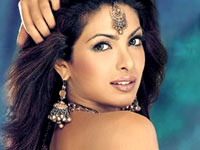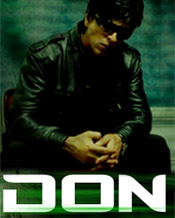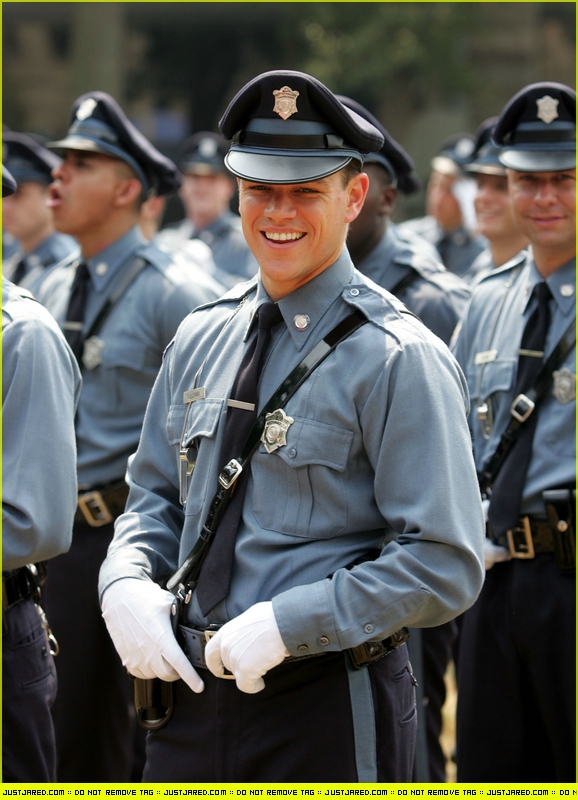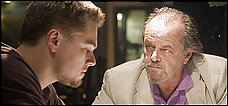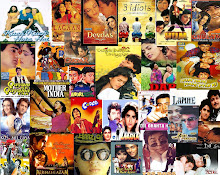
This kind of movie happens once in a lifetime. Before Lage Raho Munna Bhai there was Munna Bhai MBBS, a comedy about a “goon” who pretends to be a doctor to impress his parents. It was an Indian “Patch Adams.” When I went to see Lage Raho Munna Bhai, I was expecting a second-rate takeoff of the first Munna Bhai instead it was a completely new story. Several of the actri play the same characters such as Sanjay Dutt and Arshad Warsi who play Munna Bhai and Circuit, respectively, and other actri play new characters such as Boman Irani, who played the uptight hospital administrator in Munna Bhai MBBS, plays Lucky in Lage Raho Munna Bhai. I was touched by the fact the Director and Producer choose to bring back many of the secondary characters such as Jimmy Shergill.
In essence, Lage Raho Munna Bhai is about a hoodlum, Murli Prasad Sharma, known as Munna Bhai, who is in love with Jhanvi, a popular radio talk show host, played by Vidya Balan. He listens to her show every morning. When she holds a Mahatma Ghandi quiz for her listeners, Murli wants to win the contest in order to meet her. His sidekick, Circuit, decides to “kidnap” Ghandi experts to help him answer the questions. After winning the contest and meeting Jhanvi, he seeks to impress her by pretending to be a history professor. Then he has only five days to study about Ghandi before he gives a lecture to an elderly group of men abandoned by their children who reside in Jhanvi’s home.
A psychological phenomena moves the story forward and more complications among various stories become entwined. Lucky, a real estate developer, seeks to buy Jhanvi’s home as a wedding gift for, his daughter, Simran’s in-laws. To do this, he bribes a government official to prevent Jhanvi from renewing her lease, so he can grab the house. When Lucky realizes Munna’s love interest is Jhanvi, he treats Munna, Jhanvi and her residents to a vacation in Goa. Jhanvi’s residents provide their own twists to the story.
Munna is unable to express his love for Jhanvi because he has lied to her about himself. The trip is cut short when Jhanvi finds out her belongings are out on the street and her home now belongs to Lucky.
By this time, Munna and Jhanvi have created a radio show about Ghandi where Munna addresses callers’ problems with Ghandisms with a little help from Babu. Now, Munna has a bigger problem. How will he get Jhanvi’s home back?
The remainder of the story deals with Munna’s attempts to persuade Lucky to return Jhanvi’s home. He asks callers to send Lucky flowers in hopes he will “get well.” Jhanvi and her residents camp out on the sidewalk in front of Lucky’s home to protest the loss of their home. After Lucky lies about his daughter’s birth time to her future father-in-law because he is superstitious, Simran played by Diya Mirza learns of her father lies and deceptions. She runs away from the wedding and grabs a taxi ride driven by Victor D’Souza (Jimmy Shergill). Victor intervenes and calls Munna for advice. After the bride returns to the wedding and tells her in-laws the truth about her birth time, the father-in-law rejects her upon hearing the truth, Munna steps in to convince him that her courage and truth is more real than the astrologer’s predictions.
The ending, which resolved all the conflicts, did not conclude as abruptly as many Bollywood movies do; it was a pleasant surprise. This movie is delicious and mischievous.
What makes this movie exceptional besides the fact the story has a fresh approach is that it is a wonderful composition of comedy, drama, romance and inspiration. Both the Director, Rajkumar Hirani, and Producer, Vidhu Vinod Chopra, created a well-crafted movie.
The settings are a kick, like Munna’s hangout in the wash area where Munna and Circuit work out their schemes. Here they imagine Munna’s romance with Jhanvi in colorful, hysterical, funny and sweet visions of wedding ceremonies and dating scenes.
There are countless funny scenes. I still get a kick out of the opening parking lot vignette. Other funny and charming scenes include Munna studying in the library or the birthday party which is a stitch, a riot, over-the-top and the wedding songs in Goa are delightful. Others include where a neighbor spits tobacco juice on his neighbor’s apartment outside wall, or when a pensioner, who has been denied his pension for lack of money to pay a bribe, takes off his clothes to pay the bribe embarrassing the clerk
At times, Munna struggles to live by Ghandi’s philosophy, especially the idea of living truthfully, or turning the other cheek.
Arshad Warsi as Circuit, Munna’s thug sidekick, is great. He’s a natural. Warsi plays Circuit complete with gold necklaces, rings, and jewelry. He welds and twirls a knife and gun as extensions of his hands and is as easy with a threat as breathing.
Sanjay Dutt is a Bollywood bad boy but as Munna he comes across as a heavy with a heart of gold. While I have seen Sanjay Dutt in more extensive dance numbers, his simple yet delightful dance numbers added texture to the story.
The various multi-themed stories and choreography are woven expertly with the main storyline. The song-and-dance routines are what song-and-dance routines should be in a movie. They express desires, fantasies, hopes and joys seamlessly throughout the story. Because many take place “in-place” they fit the story. Even various cell phone ringtones seemed musically integrated into the story.
One actor I admire is Boman Irani. He is versatile. Irani can be charming, hilarious, subtle, menacing and more. He has an amazing ability to inhabit various characters. With just a new slant to his eyes, a small change in facial expression or posture, changes in hairstyles, and of course his various outfits, he is convincing as a scatter-brained school principal, a threatening police officer, a staid administrator, and now as a warm but manipulative real estate developer.
To me, this movie is what Bollywood is all about. The story is exuberant, warm, charming, textured, and comes from the heart.
Director (and Film Editor): Rajkumar Hirani
Producer: Vidhu Vinod Chopra, Vir Chopra, Anil Davda
Music: Shantanu Moitra
Cinematography: C.K. Muraleedharan
Choreography: Ganesh Acharya
Cast: Sanjay Dutt, Arshad Warsi, Vidya Balan, Boman Irani, Dilip Pradhavalkar, Diya Mirza, Jimmy Shergill and more.
144 minutes, color, Hindi, September 2006







